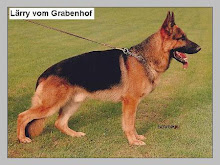How To Approach Strange Dogs (Part 1)
Knowing the right way to approach a strange dog will go a long way toward ensuring your safety, and the safety of those around you. At the same token, knowing how not to approach one can do the same. Children should also be educated of the correct procedure. Some of their little innocent ways can trigger an otherwise well-behaved dog into aggressiveness and worse, biting.
Dogs normally bite for one of three reasons: Indiscriminate biting, fear biting, and protective biting.
Indiscriminate Biting
Knowing which type of biter you are confronted with depends on the situation you are in at the time. For instance, if you are walking along the sidewalk in a residential street, minding your own business, and a dog suddenly leaves his yard, runs directly at you and bites, this is indiscriminate biting. This is a spoiled dog that is probably the dictator in his household. He is the type of dog that merely allows his family to co-exist with him in the house. It could be any breed, from a Toy Chihuahua to a Giant Schnauzer.
Fortunately, dogs that fall into this category are in the minority and are usually confined and restricted because the owners are fully aware of the their bad behavior. Undoubtedly, they probably have been the recipients of occasional bites from their own dogs whenever the animals didn’t get their way.
Fear Biting
The fear biter falls into another category because his demeanor could be genetically inherited, or he could be a product of under-socialization with different types of people and situations when he was a puppy. He could be in a panic-stricken mind at the time of the bite.
A friendly but injured dog, he could suddenly become a fear biter depending on the circumstances. If you stop on the highway to rescue a dog that has been struck by a car, the dog may think that you are the one who hit him, rather than understand that you are there to rescue him.
Protective Biting
Finally, a protective biter is one that’s unable to reason any farther than the fact that he feels the need to protect someone or something. Usually, the protective biter is in the group known as the working breeds. That is, dogs whose ancestors were originally bred to herd livestock or to protect properties and real estate. Most dogs have this protective instinct but it seems to manifest more predominantly within the working group.
Subscribe to:
Post Comments (Atom)


No comments:
Post a Comment